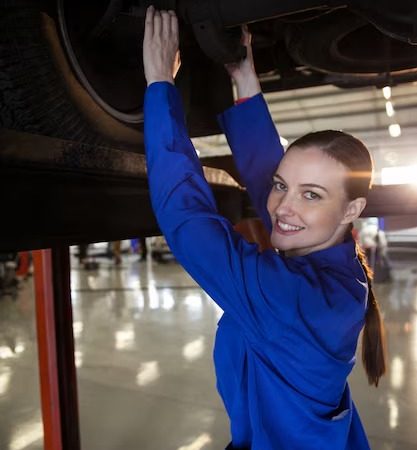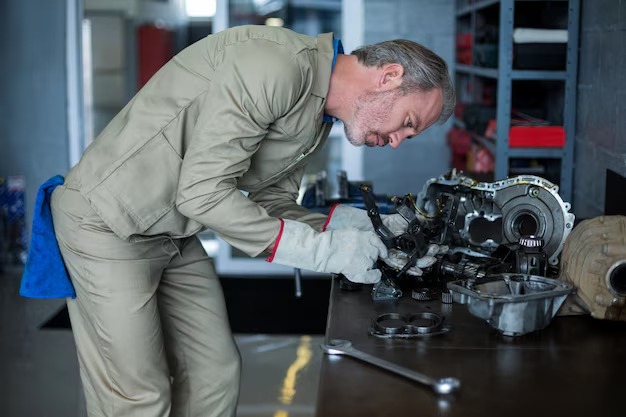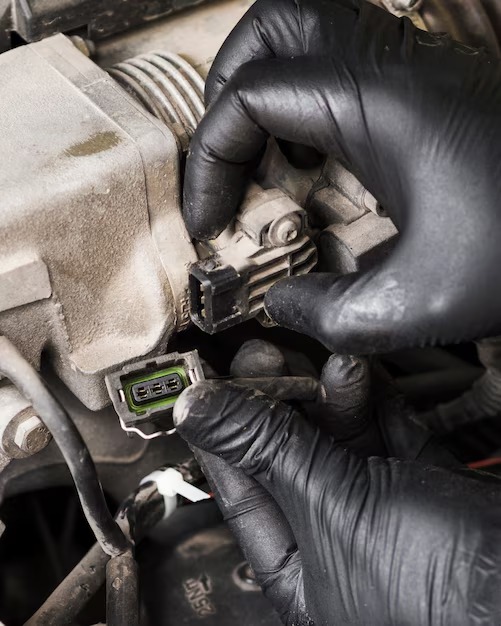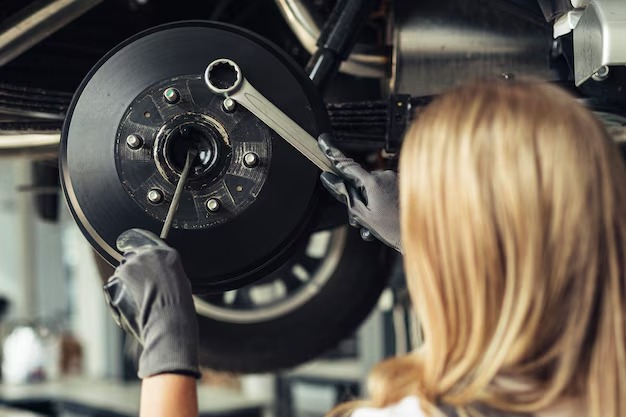Simple and Comprehensive Guide for Beginners: How to Open Your Car Hood
Have you recently purchased your first car and want to be more familiar with its components? Or perhaps you’re a seasoned driver looking to do some basic maintenance tasks on your own? Regardless of the scenario, one fundamental skill that you must learn is how to successfully open your car’s hood. This will come in handy in many situations, such as checking fluid levels, replacing a car battery, or even just having a look at the engine. But for the unfamiliar, this seemingly simple task can be surprisingly daunting.
This in-depth guide is designed to guide novices through the process of getting under the hood of their car in a straightforward and stress-free manner. We understand that getting to grips with the automotive world can be a little intimidating, and so our aim is to demystify it bit by bit.
So remember, there’s no need to panic if you’re unsure about popping open the hood of your car. This guide tackles each step in a clear and concise manner, ensuring that even the most inexperienced car owners will be able to follow along easily. So, buckle up and get ready for some hands-on experience – it’s easier than you might think!
Recognizing the Significance of Learning to Lift Your Vehicle’s Bonnet
When purchasing a car, one of the fundamental skills often overlooked by beginners is learning to access the undercover engine compartment, commonly referred to as lifting the car bonnet. This task may seem simple or even trivial for seasoned car owners, but for beginners, it may seem like a daunting challenge. However, with a bit of guidance and practice, it can be mastered quickly.
Understanding how to access your vehicle’s internal components by lifting the hood is noteworthy for several reasons. For starters, it allows you to check the status of your car’s internal parts frequently. Regular checks can help detect potential issues early, saving you from costly repairs down the line.
Why Should You Learn to Access the Engine Compartment?
Arguably, the most critical aspect of your vehicle lies beneath the hood – the engine, along with several other essential components like the battery, coolant, and oil cap. Knowing how to lift the bonnet of your car and access these vital parts makes routine maintenance and emergency car trouble much less daunting. A car’s engine health is paramount to its overall functioning, meaning that timely checks and maintenance can reduce the risk of serious vehicle distress.
Further, the path to mastering basic car maintenance starts with lifting the car hood. Tasks like checking oil levels, replacing a car battery, or refilling windshield washer fluid, are all benefited from knowing how to open your car’s hood.
- Lifesaving in emergency situations: In emergency breakdowns, knowing your way around the engine compartment helps in identifying the issue and possibly conducting small fixes to drive the car to the nearest service center.
- Increased knowledge and confidence: Gaining an understanding of your car’s inner workings can be empowering. You can converse confidently with mechanics and comprehend technical diagnostics.
- Cost-efficient: Some minor issues like replacing the battery, light bulbs, or refillable fluids can be done by yourself. This skill can save you considerable money over the long term.
In conclusion, knowledge is power. When it comes to car ownership, being able to open your car bonnet is an essential part of that knowledge. As you become more familiar with your vehicle’s under-hood components, you’ll not only build confidence but also better maintain your vehicle.
Finding the Hood Latch: The Initial Step to Opening the Car Hood
The first important step in opening your car hood consists in finding the hood release. This lever or latch usually lies in the driver’s area and finding it might require a quick search, depending on your car model.
Typically, the hood release latch is placed along the bottom of the dashboard, around knee-high on the left side of the steering wheel for left-hand side drivers. For right-hand drive vehicles, it should be located on the opposite side, toward the right of the steering wheel.
If you can’t find it easily, check your car owner’s manual. It will provide clear instructions on where the hood release latch is located for your specific vehicle model. The design of the latch also varies, but generally, it has the icon of a car hood on it.
Common Variations
- In some cars, there’s a secondary release latch located under the front of the hood. This latch needs to be pushed aside or lifted up to fully open the hood.
- In other vehicles, especially older models, the hood release might be placed at the front grille or the car bumper. In this case, you would need to get out of the car to open the hood.
Even though these are general guidelines and could help you locate your car’s hood release, always remember that the exact location can vary. Therefore, consulting your vehicle’s manual is strongly advised if you encounter difficulty.
A Simplified Guide on Locating and Pulling Your Vehicle’s Hood Release
Even beginners can safely and efficiently open their car’s hood by following a few simple steps. This straightforward guide will help you easily locate the vehicle hood release and pull it, allowing for easy access to the engine compartment.
Steps to Locate and Pull the Vehicle Hood Release
- Locate the hood release latch: The first step is to locate the hood release latch in your vehicle. In most cars, it is typically found on the driver’s side and can sometimes be identified by a small car-hood icon. For some models, this latch could be located near the steering column, while in others, it might be near the left-side footrest or just inside the driver’s side door.
- Pull the hood release latch: Once you have found the hood release latch, the next step is to pull it. It is advisable to do this gently to avoid causing any damages. Make sure to remember that pulling this latch does not completely open the hood, but instead, it unlocks it.
- Unlatch the hood: After unlocking the hood, you will need to unlatch it. Stand in front of your car and feel under the hood for a latch, handle, or button. Once you find this, press, pull, or push it, depending on your car model.
- Lift the hood: After unlatching the hood, the final step is to lift it. Use both hands to safely lift the hood, taking care not to let it fall which could cause serious damages.
In conclusion, opening your car’s hood doesn’t have to be a daunting task. By following this simplified guide, even beginners will be able to locate, pull and unlock their vehicle’s hood with ease. As a final reminder, always remember to consult your owner’s manual for the exact location of the hood release latch on your specific vehicle model, as it varies from car to car.
Handling the Safety Latch: Steer Clear of Common Missteps
As a novice, maneuvering the safety latch on your car’s hood can appear a bit challenging – but in reality, it’s as easy as pie once you understand the mechanism. Here’s a guide to the safety latch procedure to help you avoid any common pitfalls.
First, you need to locate the primary hood release lever which typically resides inside the cabin of the vehicle. This lever is usually towards the lower left area of the driver’s side. Pull the lever until you hear the hood pop up slightly – this indicates that the primary locking system has been disengaged.
It’s important to remember that the hood is not fully opened at this point. This is where many first-timers make a mistake by assuming that their hood is ready for lifting.
Now comes the handling of the safety latch. To find the safety latch, look under the partially opened hood, somewhere in the middle. You’ll find a lever or a small handle – that’s your safety latch. The trick here is to push, pull or slide this latch, depending on your car model, till the hood is wholly disengaged.
A word of caution here. Be extremely gentle while handling the safety latch. Using too much force could result in damaging it. Moreover, make sure your face or any other body part is not directly under the hood while releasing the safety latch. This would help avoid any injuries that may occur from a sudden release or pop up of the hood.
Lastly, don’t forget that safety latch is a crucial component of your vehicle’s defense system. It is designed to prevent the hood from accidentally opening while you’re driving. Therefore, make sure to leave it in its proper place and safe condition every time after servicing your vehicle.
In conclusion, understand that knowledge is the key to master any mechanism. Just follow these guidelines, and you’ll soon find yourself an expert in navigating the safety latch without any mishaps.
Expert Guidance for Successfully Accessing Your Vehicle’s Hood at the First Attempt
Whether you need to check the oil, fill the windshield wiper fluid, or just want to understand your car better, knowing how to open your car hood is a useful skill. Here are some professional tips to ensure you do this right the very first release.
Understand Your Vehicle
Each car is uniquely designed, and it’s crucial to read your vehicle’s manual first. The manual typically describes the step-by-step process necessary for opening your car’s hood. It will guide about the hood release mechanism and its location, which varies from one vehicle to another.
Feel for the Latch
After pulling the hood release handle, there’s usually a secondary release or a safety latch. It’s mostly found at the front and center of the vehicle but can sometimes be off to one side. It’s important to be gentle and take your time while feeling for it.
Safety First
Always have protection in mind when dealing with machinery. When opening a car hood, take extra caution to ensure it is cooled down. Hot engines can cause burns. Moreover, use gloves for added protection, and always maintain a safe distance from the battery.
Practical Steps
- Identify the location of the hood release handle in your car. It’s usually near the driver’s side.
- Pull the handle until you hear your hood pop releasing. If the hood doesn’t pop up slightly then you might not have pulled the handle hard enough.
- Once the hood is popped, find the latch under the hood to fully release it. The latch is typically a small bar or lever that pushes aside or up and down.
- After the hood is unlatched, lift it up. Some hoods require you to manually hold or prop it up.
The process will feel much simpler and intuitive once you manage it first time. Remember, patience and a gentle touch are key elements when learning something new, especially something as delicate and crucial as this.
Understanding the Function of Auto Hood Struts and Their Proper Usage
The hood struts, also referred to as hood shocks or gas struts, could be considered as the unsung heroes of your automobile’s under-the-hood operations. These small but vital elements take on the role of safely holding up your vehicle’s hood while allowing for straightforward opening and closing. Adequately functioning hood struts ensure that you can access your engine bay with ease and safety.
Role of Auto Hood Struts
Auto hood struts are primarily designed to aid in the overhead opening of your vehicle’s hood. They are responsible for keeping the hood stable, which prevents it from falling down or closing suddenly, and could cause injury. As such, they act like a pair of hands, hold the hood aloft, thereby providing you the necessary space to access and work on your car’s engine.
Besides the safety benefit, these struts are also essential for the hood’s smooth operation. When the struts are in good condition, the hood opens effortlessly and closes softly, protecting your vehicle from potential damage.
Utilizing Your Car’s Hood Struts
- The initial step in using the hood struts correctly is to locate the latch. The latch is usually found within the car, right next to the driver’s seat. Pull the lever upwards to release the hood.
- After opening the hood, look for the strut’s bottom attachment point on the hood, usually a small, round peg.
- Next, gently pull up the hood and align the strut’s top attachment point to the peg, then push until it clicks into place. Make sure it is secured properly before releasing the hood.
- Now, with the struts holding the hood up, you can safely perform any checks or maintenance tasks you need.
- When you’re finished with your tasks, gently push the hood down until it latches close.
In conclusion, hood struts are instrumental in your ability to conduct engine checks or maintenance tasks. Damaged or worn out struts can create a hazardous work environment and, ultimately, may damage your vehicle. Regular inspection and replacement of the struts will ensure their continued functionality and safety.
Common Complications and Solutions: What to Do When Your Car’s Front Cover Doesn’t Lift?
There can be multiple issues that might prevent your car’s hood from opening. Initial hiccups may be due to lack of lubrication, corrosion, a faulty release cable, or issues with the hood latch assembly. Let’s discuss some remedies when the car front lid won’t open.
1. Lubrication Issue
Over time, components can get dry, causing them to stick rather than slide smoothly. An easy fix for this is to regularly lubricate the latch mechanism and hood hinges. This can be achieved using a simple can of WD-40 or lithium grease.
2. Corrosion
When the metallic parts of your car start to rust, this can cause hindrances in the release mechanism. Frequent checks and proper cleaning can be valuable in combating this issue.
3. Damaged Release Cable
Simply put, the hood won’t come up if the cable connecting the release handle and the hood latch is broken. A broken cable will require a replacement for the hood to open properly. It’s always advisable to get professional help in such cases.
4. Faulty Latch Assembly
The car’s hood latch holds the hood down tightly and is released when your pull the hood release handle. However, if some components of the latch assembly are worn out or damaged, it might prevent the hood from opening. Once again, it is better to consult a mechanic or a professional for such issues.
All these considerations highlight the importance of frequent maintenance and checks to ensure the smooth operation of your car hood. Proper care and preservation add to the overall durability of your vehicle. Furthermore, it is crucial to address any issues at the earliest to prevent unnecessary costs and troubles down the line.
Keeping the Car Hood Latch and Mechanism in Optimal Condition for Prolonged Use
Maintaining your vehicle’s hood latch and lever in excellent condition is vital in ensuring the longevity of these components. This mechanism is what allows you to open the hood and access your vehicle’s engine, so a functional latch is essential for regular checks and services. Here are some simple steps to ensure it lasts for an extended period.
Keep it Clean
The most fundamental step in care for your hood latch and mechanism is keeping it clean. The build-up of dirt, grease, or road grime can interfere with the latch’s ability to operate correctly, leading to it functioning poorly or failing entirely.
Regularly taking a moment to wipe down the area with a clean cloth can make a substantial difference. For more stubborn dirt, a mild detergent solution can aid in the cleaning process. Rinsing it carefully with water afterward is also recommended.
Lubricate Frequent
Another critical aspect of keeping your hood latch in top condition is lubrication. The latch mechanism is made up of moving parts that can wear out over time due to friction. Regular application of a high-quality automotive lubricant can minimize this wear and tear, helping the lever to function smoothly and without issues.
Inspection and Repairs
Lastly, it’s important always to be attentive to potential issues with your car hood latch and lever. If you notice that the hood is slightly harder to open or doesn’t seem to secure properly when closed, it might be an indication that there’s an issue with the latch mechanism.
Don’t put off any necessary repairs- a faulty latch can result in your hood opening while you’re driving, which can be hazardous. A certified mechanic should handle more complex repairs and replacements.
With these simple steps, you can ensure that your car’s hood latch and release mechanism will serve you well for a long time.
Ensuring Safety While Handling Your Vehicle’s Bonnet
Often overlooked but deeply critical, considering safety measures while working with your vehicle’s hood is vital. Whether you’ve recently become an owner of a vehicle or you’ve been one for a while, it’s essential to take certain precautions when opening and shutting your vehicle’s hood. Negligence could cause unwanted incidents or damages.
Before Raising Your Vehicle’s Bonnet
Prior to unfolding the hood of your car, always ensure your vehicle is turned off. An active engine presents multiple safety risks like accidental ignition of flammable liquids or the possibility of getting your hands caught in moving parts. Further, remember to park your car on firm, flat ground to prevent any unwanted movement.
Cool Engine Before Opening
If your vehicle was recently running, make sure to let it cool down before you unlock the hood. Engine components can remain hot long after the car is turned off, and touching them could lead to severe burns. It’s always recommended to wait for a significant amount of time to allow the engine to cool down.
While Interacting With The Bonnet
Always take extreme caution when releasing, lifting, and holding the bonnet. Keep your fingers and hands away from any hinges or closing mechanisms. These areas can potentially cause injury when opening or closing the hood.
- Ensure that when the hood is open, it is properly secured with the stand or prop rod to prevent it from falling.
- Never try to hold the hood up with your hand while you’re operating under it.
- Keep children and pets far away while the bonnet is open.
Shutting the Car Hood Safety
When it’s time to close the hood, lower it to a height from which it will be able to latch properly and securely. Then, let it drop. Never use force or extra weight to shut it or you could cause damage. Once closed, double-check to see if it’s locked properly before driving again.
Observing these precautions ensures your interactions with your vehicle’s hood are safe, preventing any unexpected accidents or costly damages.
Recognizing the Need for Expert Assistance: Identifying When to Contact an Auto Repair Technician
Contrary to most tasks related to maintaining your vehicle, like opening your car hood, there will come a time when you may need to consider enlisting the services of a certified mechanic. It is important to know when to call in a professional to avoid causing further damage to your vehicle.
Signs You Need a Professional Mechanic
Below are a few scenarios when consulting an auto repair technician might be the most practical decision:
- Dashboard warning lights: Modern cars are equipped with complex computer systems that monitor your car’s inner workings. When these lights are on, it’s often a sign of fundamental issues that need professional diagnosis and repair.
- Unusual noises: Sounds can indicate anything from minor adjustments to serious mechanical problems. A professional’s ear is trained to decipher these sounds and take the needed action.
- Fluid leaks: If you notice fluids such as oil or coolant leaking from your vehicle, a mechanic’s assistance would be necessary to locate the source and rectify the problem.
- When the car hood won’t open: Although opening a car’s hood might seem straightforward, there may be instances where it won’t budge due to a broken cable or latch. In such cases, forcing it may cause further damage.
Observing unfamiliar and unusual alterations in your vehicle can prevent small problems from ballooning into expensive repairs. It’s crucial to never ignore visible, auditory, or sensory signals that something might be wrong with your vehicle.
Remember: Consulting professionals becomes crucial when the issues delve much deeper than the surface level. They possess the necessary training, experience, and tools to accurately diagnose and fix potentially complicated and dangerous problems.
FAQ: How to open car hood
When should I consider calling in a professional mechanic?
You should consider calling a mechanic when you notice unexplained or unusual changes in the performance of your vehicle, excessive smoke, unusual noises, leaks, or if warning lights on the dashboard come on.
Can I perform minor repairs on my car myself?
Yes, minor repairs such as changing a flat tire, changing the oil, or replacing wiper blades can often be done yourself. However, it’s crucial that you are confident in what you’re doing, as incorrect repairs can lead to bigger problems.
Can I ignore the check engine light?
Ignoring the check engine light is not advisable. It might be indicating a serious problem that should be addressed by a professional to prevent expensive repairs in the future. Consulting a mechanic will help determine the cause and the necessary steps to fix it.
What might cause my car to overheat?
A car might overheat due to a malfunctioning cooling system, a problem with the radiator, an issue with the water pump, or another related issue. However, it’s best to have a professional diagnose the problem to ensure it’s correctly fixed.
My car is making unusual noises, should I call a mechanic?
Yes, unusual noises like grinding or squealing can be indicative of severe problems with your vehicle. It’s best to consult with a professional mechanic to determine the source of the noise and prevent further damage.
How often should I get my car serviced by a professional?
This can depend on your vehicle model and how often you use your car. However, a good rule of thumb is to have your vehicle checked at least once a year or every 12,000 miles, whichever comes first.
I’m experiencing poor fuel economy. Do I need to see a mechanic?
Poor fuel economy can be a sign of various issues, from tire problems to engine malfunctions. If there’s a sudden change in your vehicle’s fuel economy, it’s a good idea to have it checked by a mechanic.
Are all mechanics certified? How do I know if a mechanic is qualified?
Not all mechanics are certified, but most reputable ones are. Certifications, such as the ones from the National Institute for Automotive Service Excellence (ASE), indicate the mechanic has received a high standard of training. Before choosing a mechanic, you can ask about their certifications or look for certificates displayed in their workshop.
When should I consider calling a mechanic for my car?
It’s advisable to call a mechanic when you notice issues such as warning lights on your dashboard, unusual noises, leaks, smoke, or anything that affects the performance of your vehicle like reduction in power, fuel economy, or frequent stalling. Additionally, regular services according to the manufacturer’s maintenance schedule should always be done by a professional mechanic.
How do you open the hood of a car when it’s stuck, and the release latch inside the car doesn’t work?
When the release latch inside the car doesn’t work, you can try the following steps to open a stuck car hood.
What’s the first step to open a stuck car hood when the interior release latch is not functioning?
The first step to open a stuck car hood is to pop the hood from the outside.
What should you do after popping the hood from the outside to access the latch?
After popping the hood, you should reach under the hood to locate the latch.
What’s the next step after locating the latch under the hood?
The next step is to pull the latch to release the hood.
If the latch is difficult to reach under the hood, what can you do to make it more accessible?
To make the latch more accessible, you can use a long tool or an extended object to reach it.
What precautions should you take when pulling the latch under the hood to open it?
When pulling the latch, be cautious not to damage it or any surrounding components.
What can you do if you can’t find the latch under the hood, or it’s too dark to see?
If you can’t find the latch or it’s too dark to see, use a flashlight to help you locate it.
What’s the significance of propping the hood open after releasing the latch?
Propping the hood open allows you to access the engine compartment for car repairs or inspections.
How do you lower the hood after performing necessary repairs or checks under the hood?
To lower the hood, simply hold it and gently lower it back down to its closed position.
What should you do if the hood latch release cable is broken and you can’t open the hood from inside the car?
If the hood latch release cable is broken, you may need to access the latch through the grille or other means to open the hood.
Why is it important to ensure the hood is securely latched after closing it?
Ensuring the hood is securely latched is crucial for safety while driving, as an unlatched hood can open unexpectedly and obstruct your view or cause an accident.







